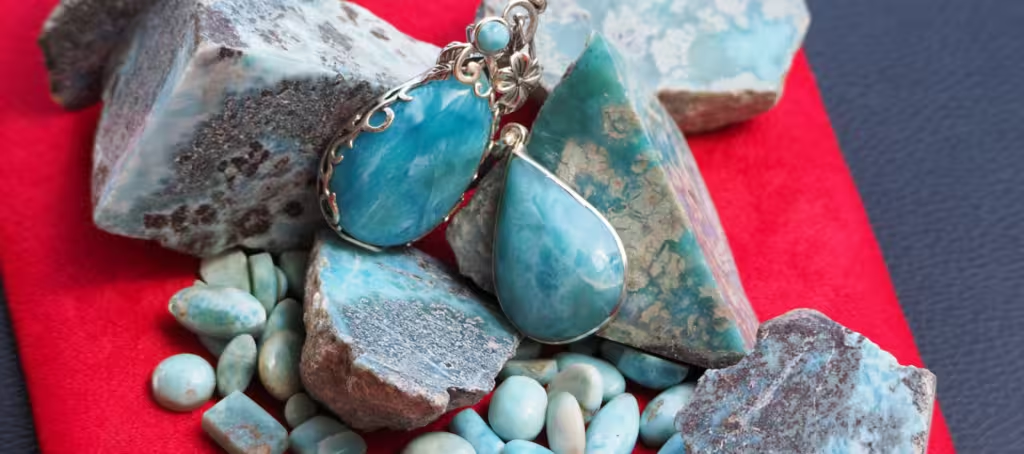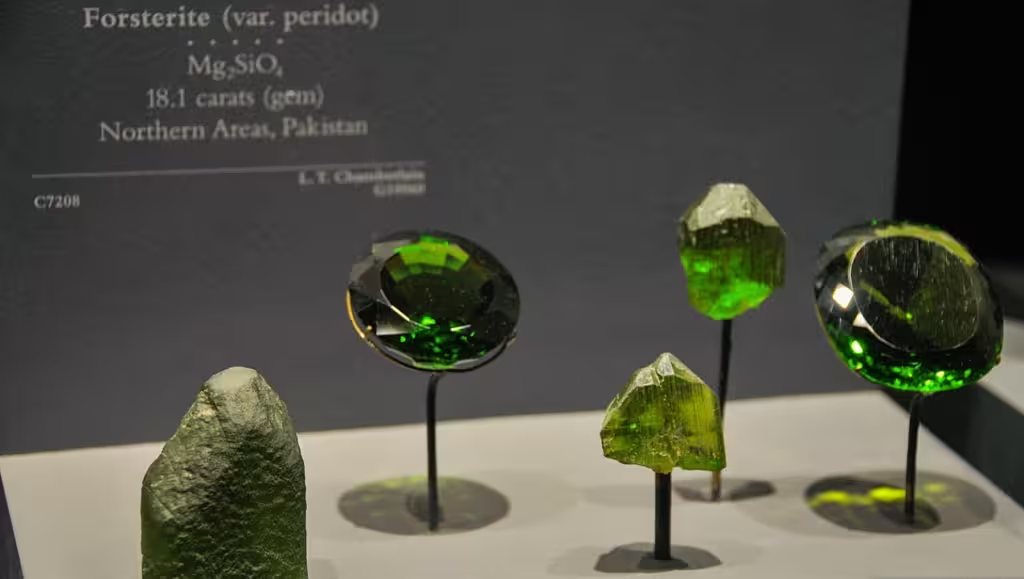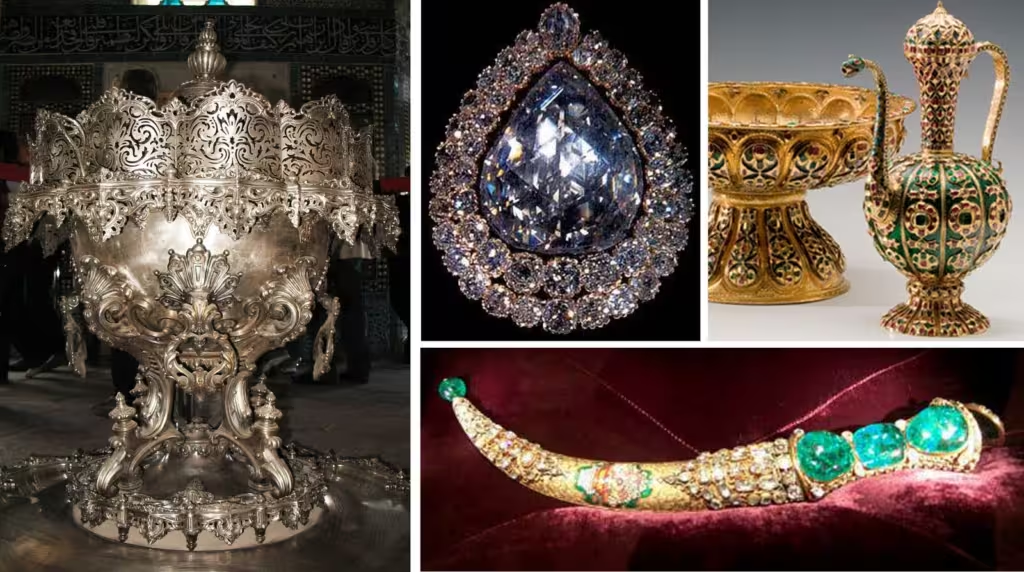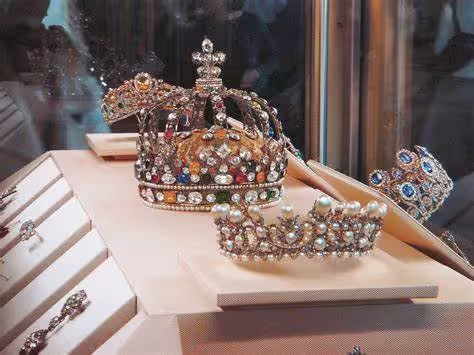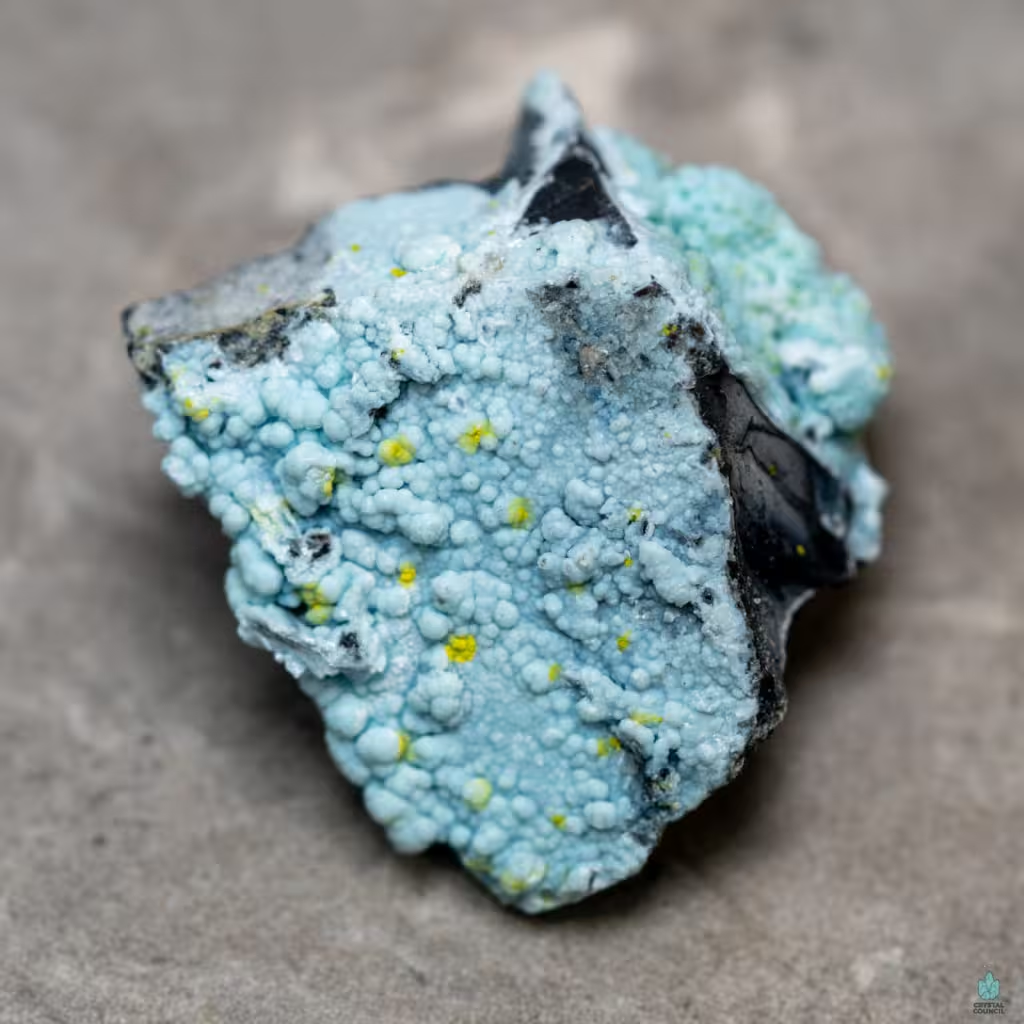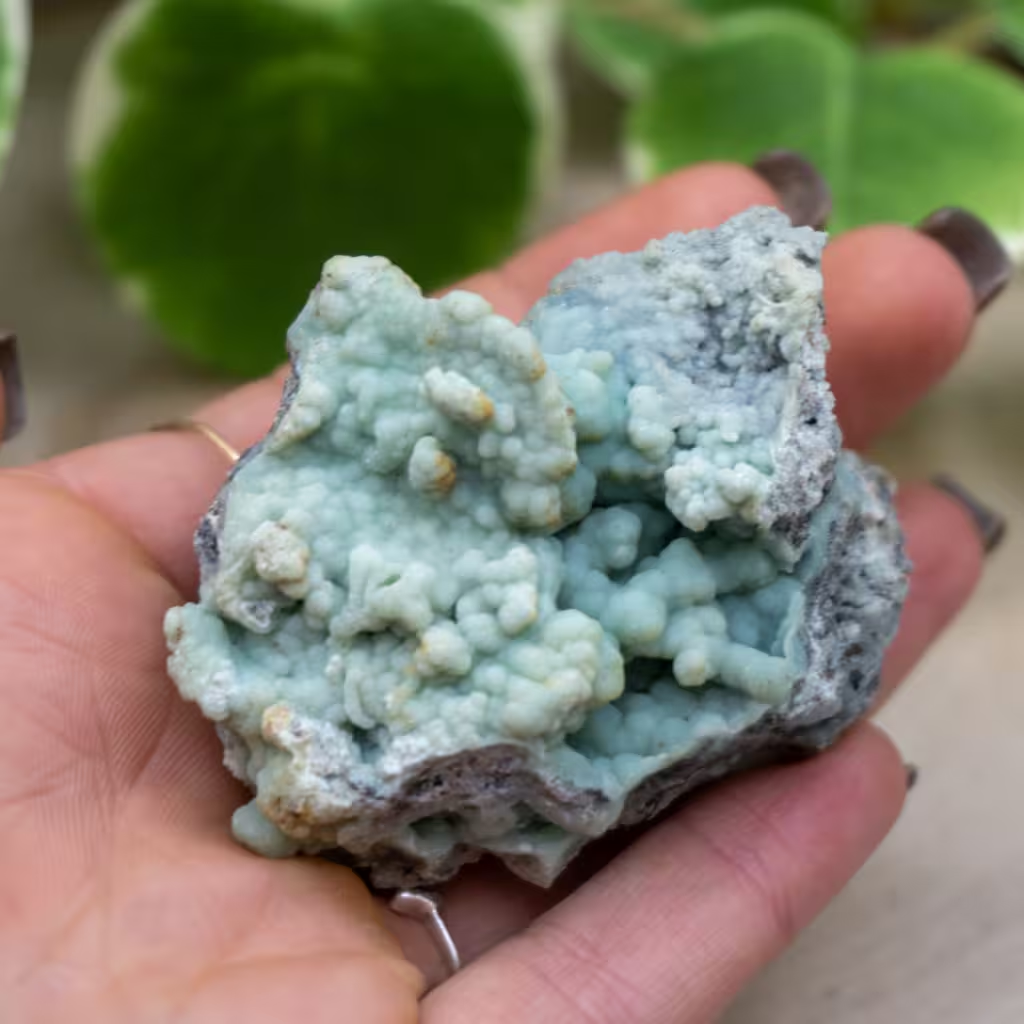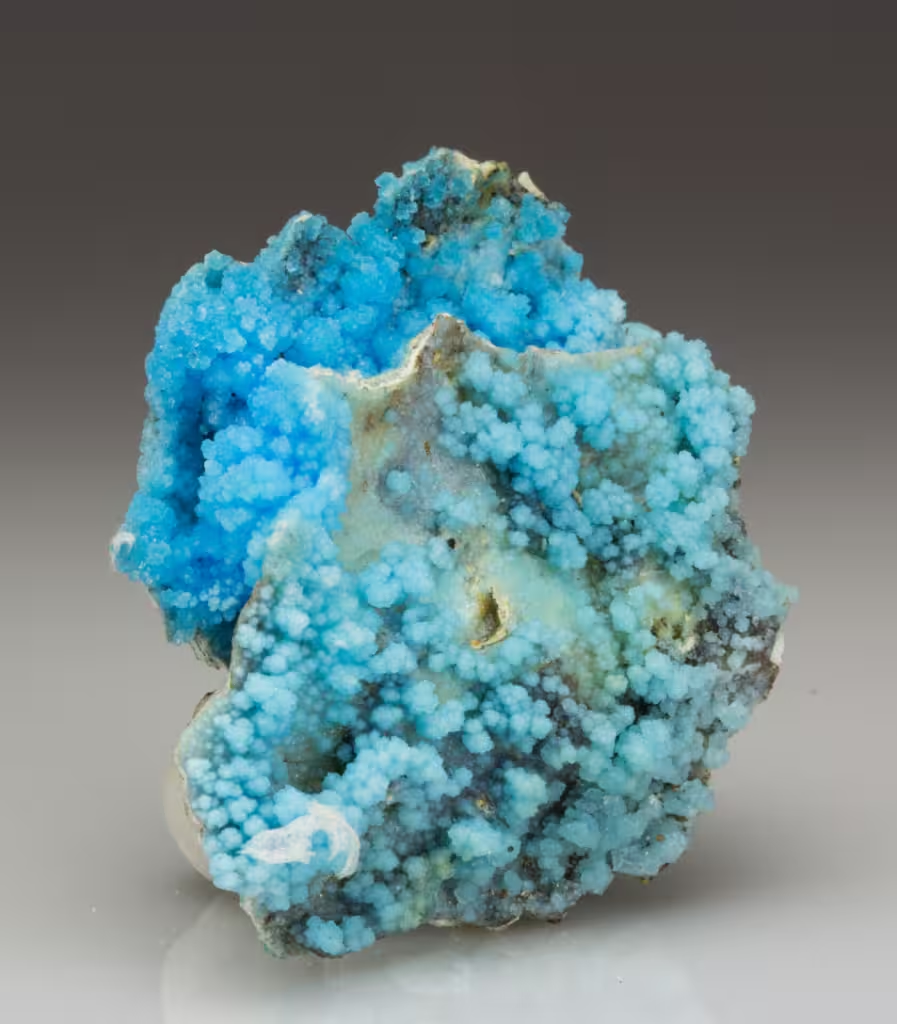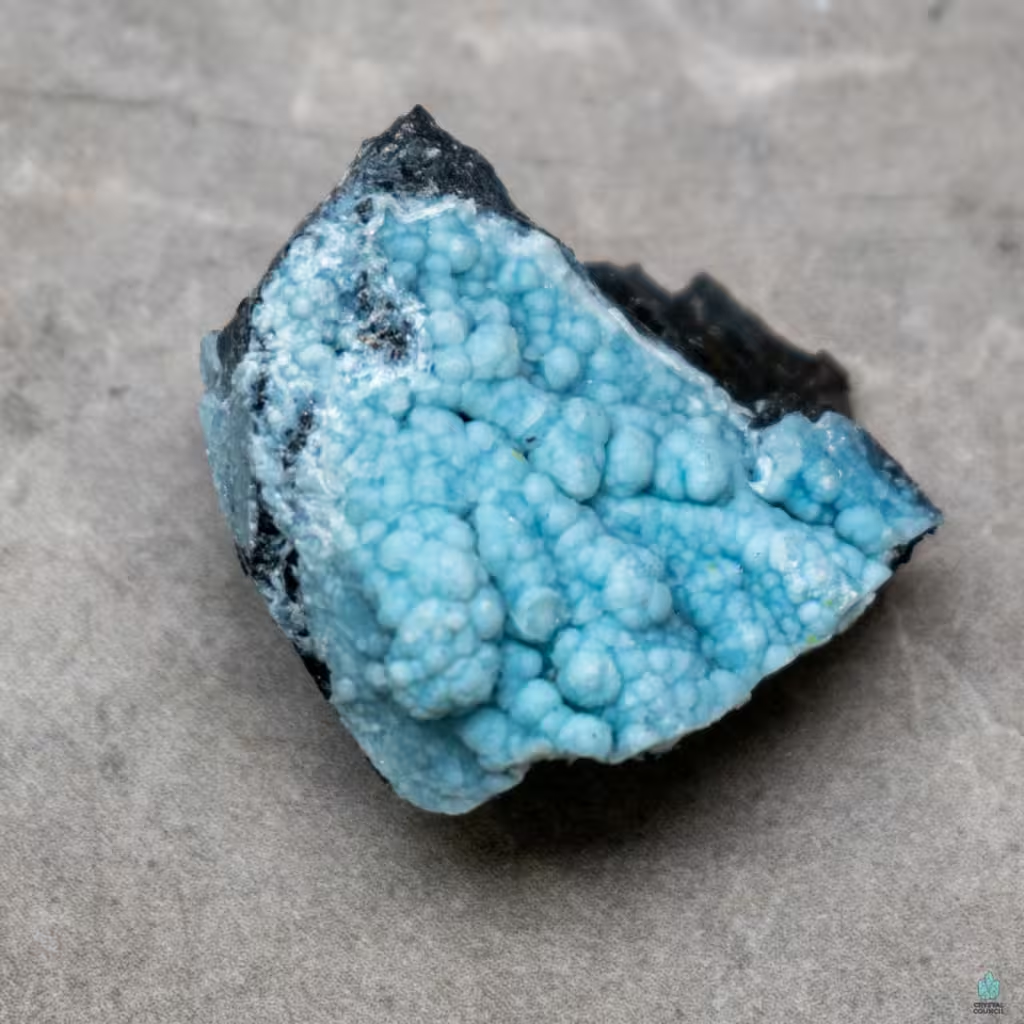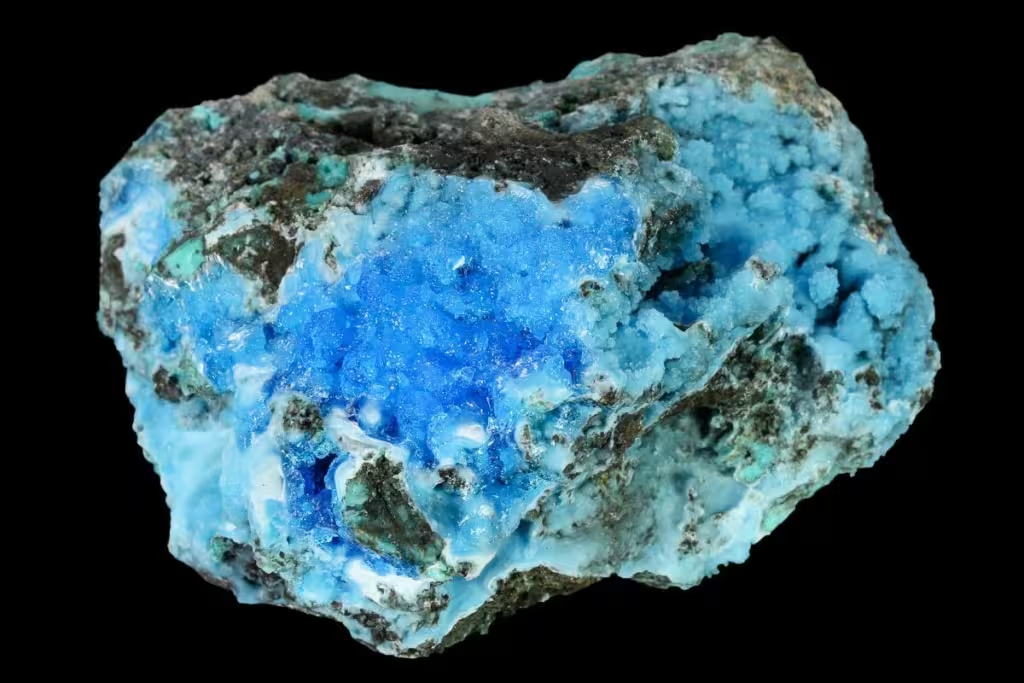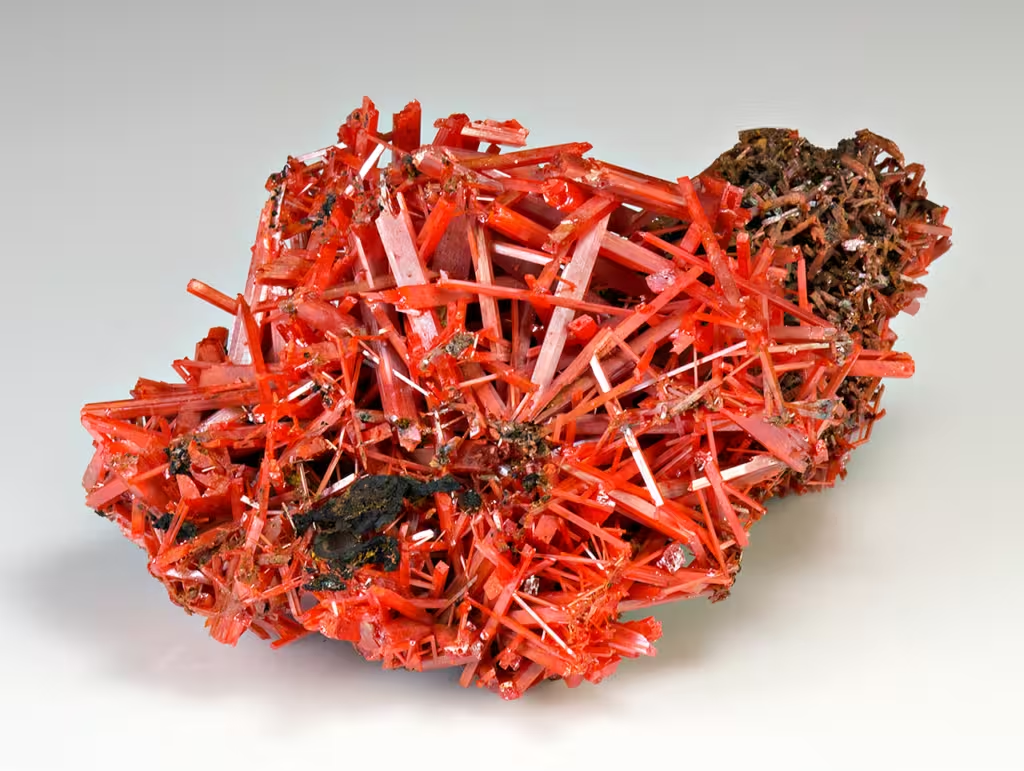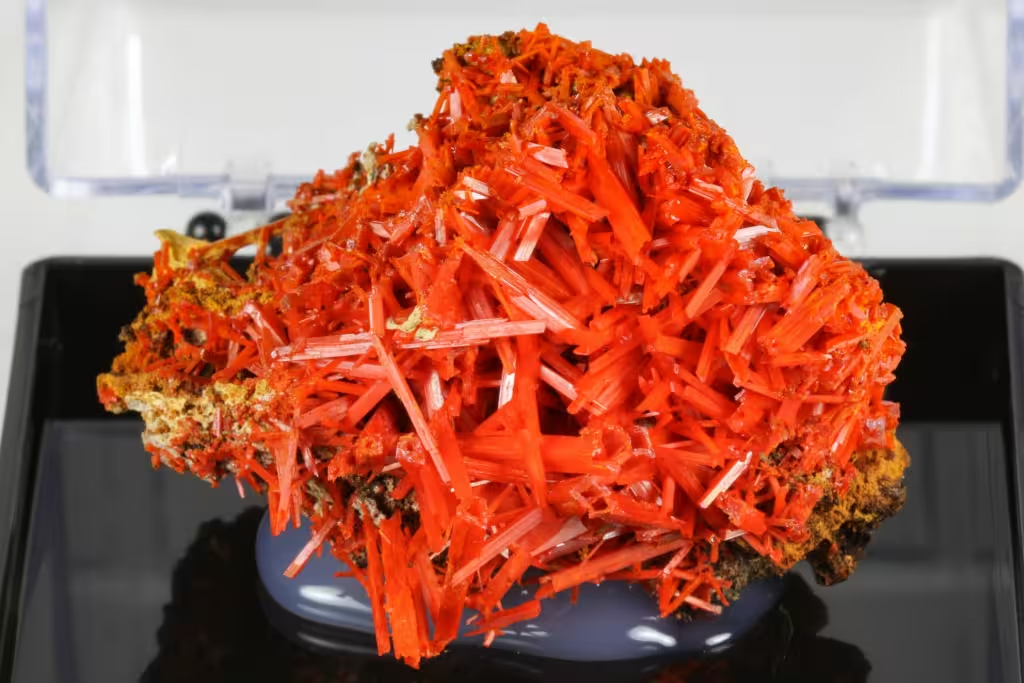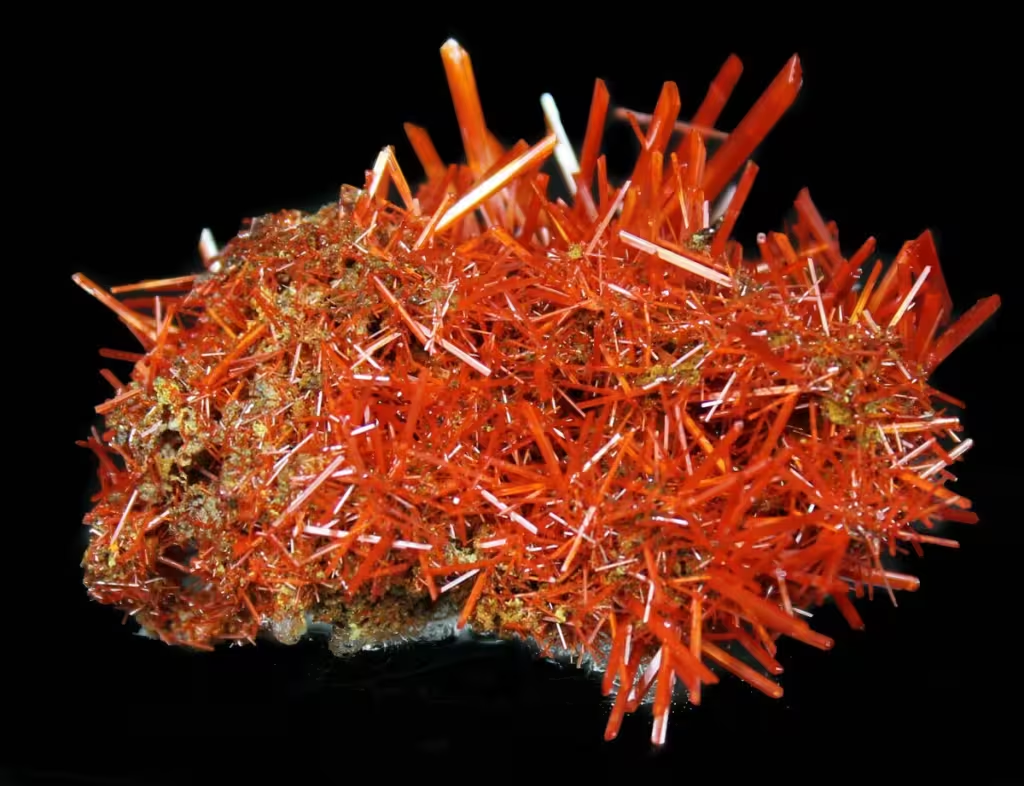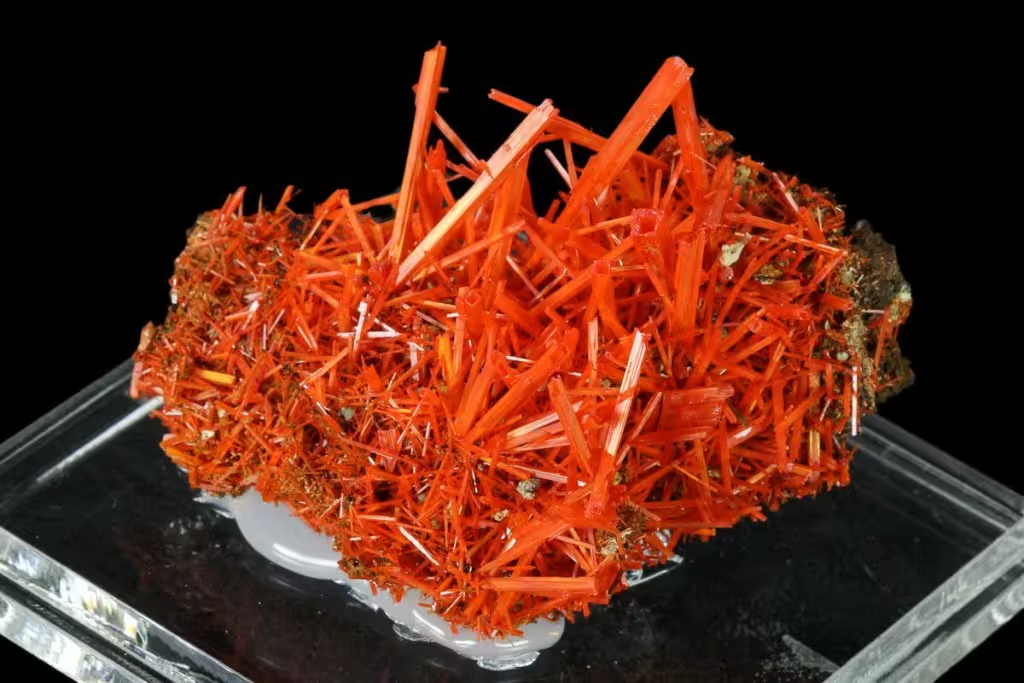Agate Types and Varieties
Agate is a type of chalcedony, which is a variety of microcrystalline quartz. It forms in volcanic rocks or ancient lava cavities, creating stunning banded patterns that make it highly sought after in jewelry and ornamental use.
Agate is a fascinating and diverse gemstone, with a wide range of types and varieties that captivate collectors and enthusiasts alike. Known for its vibrant colors and intricate patterns, agate comes in many popular forms such as Moss Agate, celebrated for its plant-like inclusions, and Fire Agate, admired for its fiery iridescence. Other well-loved varieties include Blue Lace Agate, known for its calming blue bands, and Crazy Lace Agate, with its vibrant swirling patterns. Rarer types like Botswana Agate and Condor Agate are highly sought after by collectors for their unique colors and banding. Agate varieties form under specific geological conditions, often in volcanic rock, which gives each type its distinct beauty and character.
Agate comes in a multitude of colors and patterns, each resulting from different mineral inclusions, geological processes, and environmental factors. Some of the key types of agate include:
- Moss Agate: Characterized by tree-like inclusions that resemble moss or foliage.
- Fire Agate: Displays a fiery iridescence, often with red, orange, and green flashes due to layers of iron oxide.
- Blue Lace Agate: Known for its soft, blue tones and delicate banding.
- Dendritic Agate: Features branching tree or fern-like inclusions, usually black or brown, often formed by manganese or iron oxides.
- Laguna Agate: Found in Mexico, it has intricate banding with vibrant red, pink, and orange colors.
- Crazy Lace Agate: Exhibits swirling, chaotic patterns in bright colors like yellow, red, and brown.
- Botswana Agate: Known for its subtle gray and pink hues with fine, parallel banding.
- Turritella Agate: Contains fossilized snail shells embedded in the stone.
- Thunder Egg Agate: Forms within geode-like rocks that are filled with agate.
- Iris Agate: Displays a rainbow of colors when held against light due to the diffraction of light through thin bands.
Contents
- History and Geological Origins
- Common and Rare Types of Agate
- Physical and Chemical Properties
- Types of Agate by Color and Pattern
- Agate Color Patterns and Formations
- Banded Agate, Moss Agate, and Dendritic Agate
- Key Visual Differences Between Agate Types
- How to Identify Agate Varieties Based on Color and Structure
- How Are Agate Types Formed?
- The Formation Process of Agate
- Differences in the Geological Environments That Create Various Types of Agate
- The Role of Silica and Mineral Inclusions in Agate Formation
- How Different Types of Agate Form in Volcanic Rocks and Cavities
- Popular Types of Agate: From Moss Agate to Fire Agate
- Rare Types of Agate and Their Value for Collectors
- Where to Find Agate: Global Sources of Different Agate Varieties
- How the Environment Influences Agate Formation
History and Geological Origins
Agate has been used since ancient times, with discoveries in artifacts dating back thousands of years. Historically, agate was considered a powerful protective stone by various civilizations, including the ancient Greeks, Egyptians, and Romans. The stone’s history is tied closely to its geographical distribution and formation in volcanic rocks or lava cavities.
Agates form in the voids of volcanic rocks or lava flows. As mineral-rich water seeps into these voids, it deposits layers of silica, eventually hardening into agate. The banding often comes from slight changes in the mineral content of the water over time.
Common and Rare Types of Agate
- Common Types:
- Moss Agate: Found globally, it’s one of the most common agates.
- Blue Lace Agate: Sourced primarily from South Africa and Namibia.
- Crazy Lace Agate: Mainly found in Chihuahua, Mexico.
- Rare Types:
- Fire Agate: Relatively rare and found in the southwestern U.S. and Mexico.
- Laguna Agate: Considered one of the most prized agates, found in limited deposits in Mexico.
- Iris Agate: Rare due to the specific conditions needed to create its rainbow effect.
Physical and Chemical Properties
Agate, as a form of chalcedony, shares the same chemical composition as quartz, with the chemical formula SiO₂ (silicon dioxide). Its physical properties include:
- Hardness: 6.5–7 on the Mohs scale, making it durable for jewelry.
- Density: 2.58–2.64 g/cm³.
- Luster: Waxy to vitreous.
- Fracture: Conchoidal, meaning it breaks with a smooth, curved surface.
- Banded Structure: Agate’s most distinctive feature, caused by the deposition of minerals in layers.
Agate is an incredibly diverse and beautiful gemstone with a rich history and wide variety of types. Its global presence and unique formations make it a collector’s favorite, whether for its aesthetic qualities or its metaphysical associations. Whether you’re a gem enthusiast or just discovering the beauty of agate, its many forms offer endless fascination.
Types of Agate by Color and Pattern
Agate is renowned for its vast variety of colors and patterns, making it a favorite among gem collectors and enthusiasts. Each variety of agate has distinct characteristics that can help in identification and classification. Below is a detailed guide on types of agate by color and pattern, including their key visual differences and how to identify them.
Agate Color Patterns and Formations
Agate forms in layers, with colors and patterns emerging from different mineral inclusions, oxidation, and environmental conditions during formation. Common patterns and formations include:
- Banded Agate: Characterized by parallel or concentric bands of various colors. The bands result from the deposition of different mineral layers over time.
- Moss Agate: Contains mineral inclusions resembling moss, plants, or trees. These inclusions are usually green, brown, or black.
- Dendritic Agate: Features fern-like or tree-branch patterns (dendrites) caused by the presence of manganese or iron.
- Lace Agate: Displays intricate, swirling patterns that resemble lace. These agates often have a mix of bright colors.
- Eye Agate: Forms concentric circles resembling an eye, often appearing in contrasting colors.
Banded Agate, Moss Agate, and Dendritic Agate
Each of these three varieties has distinct visual features and origins.
- Banded Agate:
- Appearance: Defined by alternating colored layers or bands. Colors can range from neutral tones like white, gray, and black to more vibrant hues such as red, orange, and blue.
- Formation: The bands form as mineral-rich water deposits layers of silica in volcanic cavities. These deposits harden over time into the signature bands.
- Types:
- Botswana Agate: Fine, subtle bands in shades of gray, brown, and pink.
- Blue Lace Agate: Light blue bands, often with white or gray accents.
- Moss Agate:
- Appearance: Known for its moss-like or plant-like inclusions, usually in shades of green, brown, or black. The stone itself is often clear or milky white.
- Formation: The “moss” appearance comes from minerals like iron or manganese growing within the stone.
- Notable Locations: Commonly found in India, the U.S., and Uruguay.
- Key Variety: Montana Moss Agate often contains black or brown moss-like inclusions within a clear stone.
- Dendritic Agate:
- Appearance: Features dark, branching inclusions resembling trees or ferns. The inclusions are typically black, brown, or green.
- Formation: The dendritic patterns result from the inclusion of iron or manganese oxides.
- Common Colors: Usually colorless, white, or light gray with dark dendrites.
- Key Variety: Mexican Dendritic Agate, with striking black dendrites against a white or clear background.
Key Visual Differences Between Agate Types
- Color:
- Banded Agate: Distinct, colorful, or monochrome bands.
- Moss Agate: Contains green, brown, or black inclusions that look like moss or plants; lacks bands.
- Dendritic Agate: Tree- or fern-like inclusions, usually black or brown, on a light or clear background.
- Pattern:
- Banded Agate: Regular, parallel layers or concentric circles.
- Moss Agate: Random, organic inclusions that resemble natural vegetation.
- Dendritic Agate: Branched, tree-like patterns spread throughout the stone.
- Clarity:
- Banded Agate: Often opaque or semi-translucent.
- Moss Agate: Can be clear to opaque with moss-like inclusions.
- Dendritic Agate: Typically translucent or transparent with visible dendrites.
- Inclusion vs. Banding:
- Banded Agate: Mineral bands form during the stone’s layering process.
- Moss/Dendritic Agate: Inclusions are caused by mineral growth within the stone, not by deposition of layers.
How to Identify Agate Varieties Based on Color and Structure
- Start with the Color:
- Blue: Likely a Blue Lace Agate with soft blue and white bands.
- Green with Inclusions: Probably Moss Agate, especially if the inclusions resemble moss or foliage.
- Red, Orange, Brown: Could be Fire Agate, Laguna Agate, or a form of Crazy Lace Agate.
- Black or Dark Branching Patterns: This is typical of Dendritic Agate.
- Examine the Banding:
- Agates with well-defined, parallel bands are part of the Banded Agate family.
- If there are no bands and the patterns look chaotic or natural, it might be a moss or dendritic type.
- Look for Inclusions:
- Moss Agate: Plant-like inclusions, often with a transparent or white base.
- Dendritic Agate: Tree-branch or fern-like inclusions spread across the stone.
- Check for Special Features:
- Fire Agate: Iridescence or “fire” in the stone.
- Eye Agate: Concentric circles resembling an eye, often found in banded varieties.
- Lace Agate: Intricate, swirling patterns with a mix of colors.
Agate varieties are best identified by their color, banding, and inclusion patterns. Banded agate has distinct layers, moss agate is characterized by plant-like inclusions, and dendritic agate has tree-like formations. By examining the color, pattern, and structure, you can classify different agate types effectively. Agate remains one of the most versatile and visually striking stones, with each variety offering its own unique beauty and characteristics.
How Are Agate Types Formed?

Agate is formed through complex geological processes that take place over thousands to millions of years, mainly in volcanic environments. The unique colors, patterns, and inclusions of different agate varieties are a result of varying geological conditions, the presence of minerals, and the structure of the rock cavities where they form. Here’s a detailed look at how agate types are formed:
The Formation Process of Agate
Agate forms primarily in the cavities of volcanic rocks such as basalt, rhyolite, or other igneous rock types. These cavities were originally created by trapped gas bubbles in molten lava. Over time, these voids filled with mineral-rich water, which deposited layers of silica (silicon dioxide) that eventually hardened into agate.
Key Stages of Agate Formation:
- Volcanic Activity: Gas bubbles create cavities in molten lava as it cools and solidifies into volcanic rock.
- Silica Deposition: Silica-rich groundwater seeps into the cavities. The silica, usually dissolved quartz in water, begins to deposit layer by layer along the walls of the cavity.
- Layering: Over time, different minerals mix with the silica, resulting in the distinctive bands and colors of agate. The minerals precipitate in layers, forming the characteristic banded appearance.
- Solidification: Once the cavity is filled with layers of silica and other minerals, the agate hardens, forming a solid, semi-transparent to opaque stone.
Differences in the Geological Environments That Create Various Types of Agate
Although agates form in volcanic rock, variations in environmental factors like temperature, pressure, and mineral content lead to the creation of different types of agate.
- Temperature and Pressure: High-temperature environments tend to favor the formation of certain types of agate, like fire agate, where iron oxides create the distinctive fiery iridescence. Cooler conditions might result in more subtle banding and colors, as seen in blue lace agate or Botswana agate.
- Mineral-Rich Waters: Agates require mineral-rich water for their formation. The types of minerals dissolved in the water, such as iron, manganese, or copper, influence the color and inclusions found in different agate varieties.
- Geological Age: Some agates, such as Turritella agate, are fossilized forms of ancient life, and their formation is related to the preservation of organic material in siliceous solutions over millennia. In contrast, banded agates may form in more recent volcanic cavities.
The Role of Silica and Mineral Inclusions in Agate Formation
Silica, in the form of quartz (SiO₂), is the primary component of agate. The deposition of silica happens when groundwater containing dissolved silicon and oxygen enters a cavity. The chemical precipitation of silica results in layers of chalcedony (a microcrystalline form of quartz), which forms the base structure of agate.
- Silica: The source of silica is typically the volcanic rock itself, which is rich in silicon dioxide. As water percolates through the rock, it dissolves small amounts of silica, which then redeposits inside cavities.
- Mineral Inclusions: The colors and patterns in agate are largely due to the presence of other minerals within the silica. These inclusions can be:
- Iron oxides: Produce red, brown, and yellow hues.
- Manganese and copper: Can create greens, blues, and purples.
- Magnesium or other elements: Lead to unique formations such as dendritic patterns or moss-like inclusions.
These inclusions often crystallize at different rates, causing distinctive banding, streaks, or more chaotic patterns such as the tree-like formations in dendritic agate.
How Different Types of Agate Form in Volcanic Rocks and Cavities
Agates form in varying conditions within volcanic rock, and each type has a unique geological background that contributes to its final appearance:
- Banded Agate:
- Formation: The classic bands of agate form through rhythmic precipitation of silica from water over long periods. Each band represents a change in the mineral content of the water, temperature, or other environmental factors.
- Cavities: Banded agates typically form in gas bubbles within volcanic rock, where layers of silica deposit gradually over time.
- Moss Agate:
- Formation: Moss agate forms when iron or manganese oxides crystallize within the silica. The mossy appearance comes from mineral growth that resembles vegetation.
- Cavities: Unlike banded agate, moss agate forms in smaller cavities with abundant mineral inclusions, leading to irregular patterns rather than layers.
- Dendritic Agate:
- Formation: Dendritic agate forms when mineral inclusions, particularly manganese or iron, crystallize into branching, tree-like patterns.
- Cavities: Dendritic patterns typically form in narrow fractures or small voids where silica and minerals can slowly deposit and crystallize.
- Fire Agate:
- Formation: This rare variety of agate forms when silica and iron oxide layers create an iridescent effect. The “fire” in fire agate is due to diffraction caused by thin layers of iron oxide.
- Cavities: Fire agate forms in small cavities or cracks within volcanic rock, especially in areas with high iron content.
- Thunder Egg Agate:
- Formation: Thunder eggs are round, nodule-like formations that can be filled with agate. They form when gas bubbles in volcanic rock are completely filled with silica-rich fluids, which then crystallize into agate.
- Cavities: The entire structure of a thunder egg is often formed in a large gas bubble, with the outer shell of the egg being rock and the interior filled with agate or quartz.
- Laguna Agate:
- Formation: Found in Mexico, this agate is known for its vibrant colors and fine banding, resulting from rich iron and manganese deposits in the volcanic rock.
- Cavities: Laguna agates form in ancient volcanic flows, where the combination of time, pressure, and abundant mineral deposits leads to their intricate patterns.
Agate formation is a geological wonder that takes place over long periods through the deposition of silica in volcanic rock cavities. Variations in environmental factors, mineral inclusions, and the structure of these cavities lead to the wide variety of agate types seen today. Understanding how different agates form allows for the identification and appreciation of the unique features each variety holds, from the banded structures of Laguna agate to the intricate moss-like inclusions in Moss agate.
Popular Types of Agate: From Moss Agate to Fire Agate

Agate comes in a variety of stunning types, each with unique visual characteristics that make them popular for jewelry and decoration.
1. Moss Agate
- Description: Moss agate is known for its translucent background filled with green, black, or brown inclusions that resemble moss, plants, or trees. Unlike banded agates, it typically lacks clear banding.
- Visual Characteristics: Inclusions that mimic natural landscapes, often set against a clear, white, or light green background.
- Uses: Frequently used in necklaces, bracelets, and cabochons for rings. It’s also valued as a metaphysical stone for grounding and stability.
2. Fire Agate
- Description: Fire agate displays iridescent colors that shimmer and change when viewed from different angles, similar to the effect seen in opals. Its fiery hues of red, orange, yellow, and green are caused by layers of iron oxide.
- Visual Characteristics: Bright, flashing “fire” within the stone, typically in brownish or reddish chalcedony.
- Uses: Often cut into cabochons and used in rings or pendants. Its iridescence makes it a sought-after centerpiece for unique jewelry designs.
3. Blue Lace Agate
- Description: This type of agate is soft blue with intricate lace-like white and gray banding.
- Visual Characteristics: Soft pastel colors with delicate, swirling bands that create a calming appearance.
- Uses: A popular stone for soothing, elegant jewelry pieces like necklaces and earrings. It’s also used in holistic healing for calming emotions.
4. Crazy Lace Agate
- Description: Known for its swirling patterns of vivid red, yellow, orange, and brown hues.
- Visual Characteristics: Complex and chaotic lace-like patterns in bright colors.
- Uses: Frequently used in bold, statement pieces of jewelry and carvings. Its bright colors make it eye-catching for decorative items.
5. Dendritic Agate
- Description: Dendritic agate features dark, tree-like inclusions of manganese or iron that appear to branch through the stone.
- Visual Characteristics: Clear or white background with dark, branch-like inclusions.
- Uses: Often used in holistic healing as a stone for growth and stability. Popular in pendants and meditative tools.
Rare Types of Agate and Their Value for Collectors

Some types of agate are rare and highly collectible due to their scarcity, unique features, and geological formation.
1. Pseudomorph Agate
- Description: Pseudomorph agate occurs when one mineral gradually replaces another while retaining the original structure. For example, petrified wood is a form of pseudomorph agate.
- Value for Collectors: Its rarity comes from the specific conditions required for one mineral to replace another without altering the outer form.
- Market Demand: Highly prized by collectors of fossilized or mineralized objects, especially petrified wood agate, due to its natural beauty and historical significance.
2. Botswana Agate
- Description: Botswana agate is famous for its fine parallel banding in soft shades of gray, pink, and brown, with occasional hints of blue and purple.
- Value for Collectors: It’s valued for its unique, intricate banding and the delicate range of hues. Botswana agate is known for its high-quality polish.
- Market Demand: In demand for high-end jewelry and ornamental objects, Botswana agate’s subtle beauty and unique bands make it a collector’s favorite.
3. Condor Agate
- Description: Found in the mountains of Argentina, Condor agate is prized for its vibrant reds, oranges, and yellows with striking banding patterns.
- Value for Collectors: Its vibrant colors and unique formation, often with dramatic banding, make it one of the most valuable agates for collectors.
- Market Demand: Limited to specific regions, Condor agate is sought after by both collectors and jewelry designers for its intense colors and artistic appearance.
What Makes Certain Types More Valuable?
- Rarity: Limited supply and geographic distribution make certain types more valuable.
- Unique Patterns and Colors: Stones with rare patterns, vibrant colors, and complex structures are often more valuable.
- Size and Clarity: Larger, clearer specimens with minimal imperfections or inclusions command higher prices in the market.
Where to Find Agate: Global Sources of Different Agate Varieties
Agate is found worldwide, but specific varieties are associated with certain regions that are known for their unique geological conditions.

Brazil
- Agate Varieties: Brazil is one of the largest sources of agate, including banded agate, geode agate, and polished slabs.
- Notable Locations: The Rio Grande do Sul region is known for its abundant agate and amethyst geodes.
- Environment: The volcanic rocks in Brazil’s southern region provide the perfect environment for the formation of large agate deposits.
Madagascar
- Agate Varieties: Madagascar produces high-quality agates, including colorful varieties like Ocean Jasper (a type of agate) and fossilized coral agate.
- Notable Locations: Coastal regions in Madagascar are known for the unique geological formations that produce agate.
- Environment: Madagascar’s agates are formed in ancient lava flows and marine environments, leading to their unique visual characteristics.
United States
- Agate Varieties: The U.S. is home to many types of agate, including Montana Moss Agate, Lake Superior Agate, and Turritella Agate.
- Notable Locations:
- Montana: Known for its moss agate with plant-like inclusions.
- Lake Superior: Famous for red and orange-banded agate.
- Wyoming and South Dakota: Known for Turritella agate, which contains fossilized snails.
- Environment: Volcanic activity, ancient lake beds, and marine fossilization have all contributed to agate formation in the U.S.
Mexico
- Agate Varieties: Laguna Agate, Crazy Lace Agate, and Condor Agate are among the most famous types found in Mexico.
- Notable Locations: The Laguna region is famous for producing some of the most vibrant and highly sought-after agates in the world.
- Environment: Volcanic activity in the region provided the ideal conditions for agate formation, with mineral-rich water filling cavities to form beautiful banded structures.
How the Environment Influences Agate Formation
Agate formation is strongly influenced by the geological environment:
- Volcanic Activity: Most agates form in volcanic regions where gas bubbles in molten lava create cavities that eventually fill with silica-rich water.
- Mineral Content: The mineral composition of the groundwater that percolates through volcanic rock plays a critical role in determining the color and patterns of agate.
- Weathering and Erosion: Over time, weathering and erosion can expose agate deposits, making them accessible for mining and collection.
Agates are incredibly diverse in both appearance and formation, with popular varieties like Moss Agate, Fire Agate, and Blue Lace Agate treasured for their beauty and uniqueness. Rare agates like Botswana Agate and Condor Agate attract collectors for their scarcity and intricate designs. With deposits found worldwide in places like Brazil, Madagascar, and the U.S., the geological environment is key to the rich diversity of agate types we see today. Whether used in jewelry or collected for its natural beauty, agate remains a highly prized gemstone.
















































